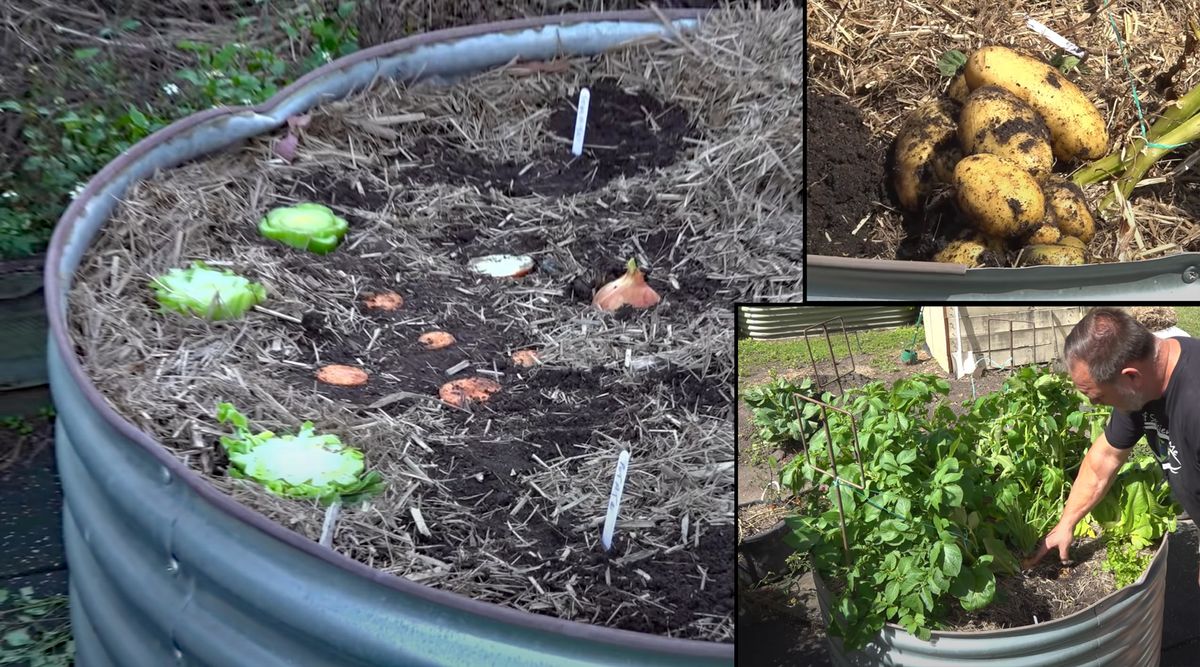Can You Plant Kitchen Scraps to Grow More Veggies?
Russ Chastain 01.29.21

(Image: Screenshot from “plant kitchen scraps” video)
Australian YouTuber ‘Self Sufficient Me’ decided to do an experiment in his garden by planting some kitchen scrap vegetables to see if they’d grow. Most of us have heard of planting a lettuce or celery base, or putting it in a jar of water after cutting off and eating most of it, but here’s a real-world test of several weeks to see just how they do in a real garden.
Just placing a bit of lettuce or whatever in a glass of water isn’t going to produce lasting results; things like that should be planted in an environment where growth is more possible — like the place where they originally grew. A garden!
He plants one potato, an onion, some bits of carrot, and bases of celery, cabbage, onion, and tomato.
After 5 weeks he has seen some really great growth, mostly of the potato, which put up so much greenery it shaded out much of the other stuff. At that time he samples the lettuce, celery, and onion greens and pronounces them all quite good.
When he decides to harvest the crop at 3 months, he’s let things go a little longer than he probably should have (some beetles are eating some of his taters), but he harvests quite a heap of good spuds from that one lonesome potato he’d planted. Kind of amazing what can be done when you plant kitchen scraps. The potato he planted to get all this organically-grown goodness was a supermarket potato that had “gone green.”
The lettuce wasn’t much good to him at that stage for anything other than seeds, but still, it’s a great result from just jamming a scrap base into the dirt.
The cabbage base basically disappeared; perhaps a critter dug it up and ate it before it had a chance to grow.
Planting a carrot base won’t produce a new carrot, but it will put up greens from which it’s possible to harvest carrot seeds; his carrots didn’t make it due to an overcrowded garden bed.
The onions grew some edible stuff, but not all that large and kind of in sprouts rather than bulbs.
The celery was a definite winner, providing a lot of food from a leftover supermarket celery base. Nice!
Last of all, he looks at — er, make that “for” — the tomato. It didn’t grow at all, despite having a good number of seeds inside when he planted it. Now it’s just gone, having rotted and composted back into the soil from whence it came. His theory is that it may have been a sterile variety.
I gotta say I’m a bit amazed by just how much you can harvest if you plant kitchen scraps in the garden. Pretty cool! And great knowledge to have these days, as most folks work more and more towards becoming self-sufficient.